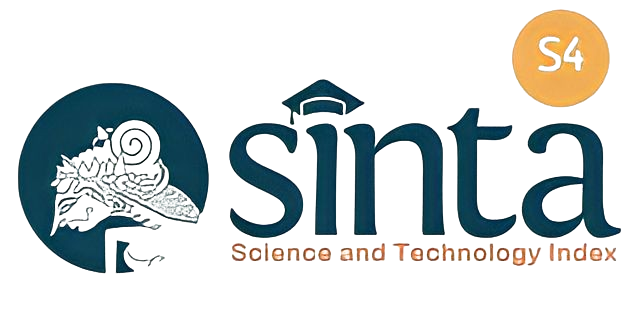Analisis Perilaku Masyarakat Untuk Ber-Ziswaf Secara Digital Melalui Layanan M-Banking Syariah Menggunakan Modifikasi Utaut
DOI:
https://doi.org/10.14421/jmes.2022.012-02Keywords:
Behavior intention , Adoption Sharia M-banking, Islamic Social FinanceAbstract
Tujuan penelitian untuk menganalisis dan memprediksi determinasi niat berperilaku masyarakat untuk ber-ZISWAF secara digital dengan adopsi layanan m-banking syariah. Model yang digunakan adalah Unified Theory of Acceptance and Use to Thechnology (UTAUT) dengan menambahkan konstruk habit dan trust. Pengumpulan data dilakukan secara online melului google form. Analisis dengan PLS-SEM menggunakan SmartPLS 3.3.3 dengan jumlah sampel 146 respoden. Hasil penelitian menunjukan bahwa niat ber-ZISWAF secara digital melalui m-banking syariah dipengaruhi oleh performance expectancy dan habit secara signifikan mempengaruhi behavior intention. Namun variabel effort expectancy, facilitating condition dan social influence tidak signifikan pada behavior intention. Sedangkan untuk adopsi dipengaruhi habit dan trust secara signifikan mempengaruhi adopsi penggunaan (usage adoption) masyarakat pada layanan m-banking untuk ber-ZISWAF secara digital.
Downloads
 Abstract viewed: 643 times
|
Abstract viewed: 643 times
|
 PDF downloaded = 611 times
PDF downloaded = 611 times
References
Abdillah, Willy., dan Jogiyanto. (2015). Partial Least Square (PLS) Alternatif Structural Equation Model (SEM) dalam Penelitian Bisnis. Yogyakarta: Andi Offset
Akhtar, S., Irfan, M., Kanwal, S., & Pitafi, A. H. (2019). Analysing UTAUT with trust toward mobile banking adoption in China and Pakistan : extending with the effect of power distance and uncertainty avoidance. 2(3), 183–207.
Al-Saedi, K., Al-Emran, M., Ramayah, T., & Abusham, E. (2020). Developing a general extended UTAUT model for M-payment adoption. Technology in Society, 62(June), 101293. https://doi.org/10.1016/j.techsoc.2020.101293
Alalwan, A. A., Dwivedi, Y. K., & Rana, N. P. (2017). Factors influencing adoption of mobile banking by Jordanian bank customers: Extending UTAUT2 with trust. International Journal of Information Management, 37(3), 99–110. https://doi.org/10.1016/j.ijinfomgt.2017.01.002
Alalwan, A. A., Dwivedi, Y. K., Rana, N. P., Lal, B., & Williams, M. D. (2015). Consumer adoption of Internet banking in Jordan: Examining the role of hedonic motivation, habit, self-efficacy and trust. Journal of Financial Services Marketing, 20(2), 145–157. https://doi.org/10.1057/fsm.2015.5
Bhatiasevi, V. (2015). An extended UTAUT model to explain the adoption of mobile banking. Information Development, 32(4), 799–814. https://doi.org/10.1177/0266666915570764
Farah, M. F., Hasni, M. J. S., & Abbas, A. K. (2018). Mobile-banking adoption : empirical evidence from the banking sector in Pakistan. https://doi.org/10.1108/IJBM-10-2017-0215
Farzin, M., Sadeghi, M., Yahyayi Kharkeshi, F., Ruholahpur, H., & Fattahi, M. (2021). Extending UTAUT2 in M-banking adoption and actual use behavior: Does WOM communication matter? Asian Journal of Economics and Banking, 5(2), 136–157. https://doi.org/10.1108/ajeb-10-2020-0085
Hair, J. F., Sarstedt, M., Ringle, C. M., & Mena, J. A. (2012). An assessment of the use of partial least squares structural equation modeling in marketing research, Journal of the Academy of Marketing Science, Vol. 40, Issue 3, pp 414–433. DOI: 10.1007/s11747-011-0261-6
Hidayat, M. T., Aini, Q., & Fetrina, E. (2020). (User Acceptance of E-Wallet Using UTAUT 2 – A Case Study). 2(January), 239–247. https://doi.org/10.22146/.v9i3.227
Hilmawan, T. W. (2020). Faktor – faktor yang mempengaruhi minat masyarakat kota malang menggunakan uang elektronik dengan menggunakan model utaut. Universitas Islam Negeri Maulana Malik Ibrahim, Malang.
Hussain, M., Mollik, A. T., Jhons, R., & Rahman, M. S. (2018). M-payment adoption for bottom of pyramid segment : an empirical investigation. https://doi.org/10.1108/IJBM-01-2018-0013
Ivanova, A., & Kim, J. Y. (2022). Acceptance and Use of Mobile Banking in Central Asia: Evidence from Modified UTAUT Model. Journal of Asian Finance, Economics and Business, 9(2), 217–227. https://doi.org/10.13106/jafeb.2022.vol9.no2.0217
Jati, N. J. (2012). Analisis Faktor-Faktor Yang Mempengaruhi Minat Pemanfaatan Dan Penggunaan Sistem E-Ticket (Studi Empiris pada Biro Perjalanan di Kota Semarang) (Vol. 1, Issue 1). Universitas Diponegoro.
Kaabachi, S., Ben Mrad, S., & Fiedler, A. (2020). The moderating effect of e-bank structure on French consumers’ trust. International Journal of Bank Marketing, 38(2), 501–528. https://doi.org/10.1108/IJBM-04-2019-0119
Laras. (2020). Analisis Penerimaan Mobile Banking Perbankan Syariah dengan Menggunakan Pendekatan Technology Acceptance Model. Universitas Islam Negeri Syarif Hidayattullah, Jakarta.
Mohd Thas Thaker, M. A. Bin, Allah Pitchay, A. Bin, Mohd Thas Thaker, H. Bin, & Amin, M. F. Bin. (2019). Factors influencing consumers’ adoption of Islamic mobile banking services in Malaysia: An approach of partial least squares (PLS). Journal of Islamic Marketing, 10(4), 1037–1056. https://doi.org/10.1108/JIMA-04-2018-0065
Mundir, A., & Hayati, L. N. (2021). Pengaruh Layanan Mobile Banking Terhadap Kepuasan Nasabah di BRI Syari’ah KCP Malang Pandaan Kabupaten Pasuruan. Jurnal Ekonomi Islam, 12(2), 243–256. https://doi.org/10.35891/ml.v12i2.2668
Purwanto, E., & Loisa, J. (2020). The Intention and Use Behaviour of the Mobile Banking System in Indonesia: UTAUT Model. Technology Reports of Kansai University, 62(6), 2757–2767.
Raza, S. A., Shah, N., & Ali, M. (2018). Acceptance of mobile banking in Islamic banks : evidence from modi fi ed UTAUT model. 10(1), 357–376. https://doi.org/10.1108/JIMA-04-2017-0038
Riza, A. F. (2021). The potential of digital banking to handle the Covid-19 pandemic crisis: Modification of UTAUT model for Islamic finance industry. 7(1), 1–16. https://doi.org/10.20885/JEKI.vol 7.iss1.art1
Sankaran, R., & Chakraborty, S. (2021). Factors Impacting Mobile Banking in India: Empirical Approach Extending UTAUT2 with Perceived Value and Trust. IIM Kozhikode Society & Management Review, 232020682097521. https://doi.org/10.1177/2320206820975219
Setyono, J. (2021). Determinan Niat Menggunakan Digital Banking Perbankan Syariah: Pengembangan Unified Theory of Acceptance and Use of Thecnology 2 (UTAUT2).
Sivathanu, B. (2018). Adoption of digital payment systems in the era of demonetization in India An empirical study. https://doi.org/10.1108/JSTPM-07-2017-0033
Sugiyono. 2015. Statistika Untuk Penelitian. Bandung Alfabeta
Sugiyono.2018. Metode Penelitian Kuantitatif dan Kualitatif. Bandung, Alfabeta
Tarhini, A., El-Masri, M., Ali, M., & Serrano, A. (2015). Extending the UTAUT model to understand the customers ’ acceptance and use of internet banking in Lebanon A structural equation modeling approach. https://doi.org/10.1108/ITP-02-2014-0034
Thaker, H., Thaker, M., Khaliq, A., & Hussain, H. (2019). Continuous Adoption of Internet Banking : Evidence from Islamic Banks in Malaysia. November, 1–27. https://doi.org/irep.iium.edu.my/76783
Utama, R. S. (2021). Analisis Faktor-Faktor Yang Mempengaruhi Penggunaan Berkelanjutan Layanan Mobile Banking Syariah di Indonesia [Universitas Islam Indonesia]. https://dspace.uii.ac.id/handle/123456789/31947
Venkatesh, V., Morris, M. G., Davis, G. B., & Davis, F. D. (2003). User Accepted Of Information Technology: Toward a Unified View. 27(3), 425–478.
Venkatesh, V., Thong, J. Y. L., & Xu, X. (2012). Management Information Systems Research Center, University of Minnesota. 36(1), 157–178.
Sumber lain:
https://apjii.or.id/survei diakses pada 10 Januari 2022
https://www.bi.go.id/id/publikasi/ruang-media/news-release/Pages/sp_244122.aspx diakses pada 2 Maret 2022
https://baznas.go.id/Press_Release/baca/Pengumpulan_BAZNAS_Pusat_2021_Tumbuh_33_Persen/950 diakses pada 5 Maret 2022
https://filantropi.or.id/indonesia-kembali-jadi-negara-paling-dermawan-di-dunia/ diakses pada 25 Juli 2022











